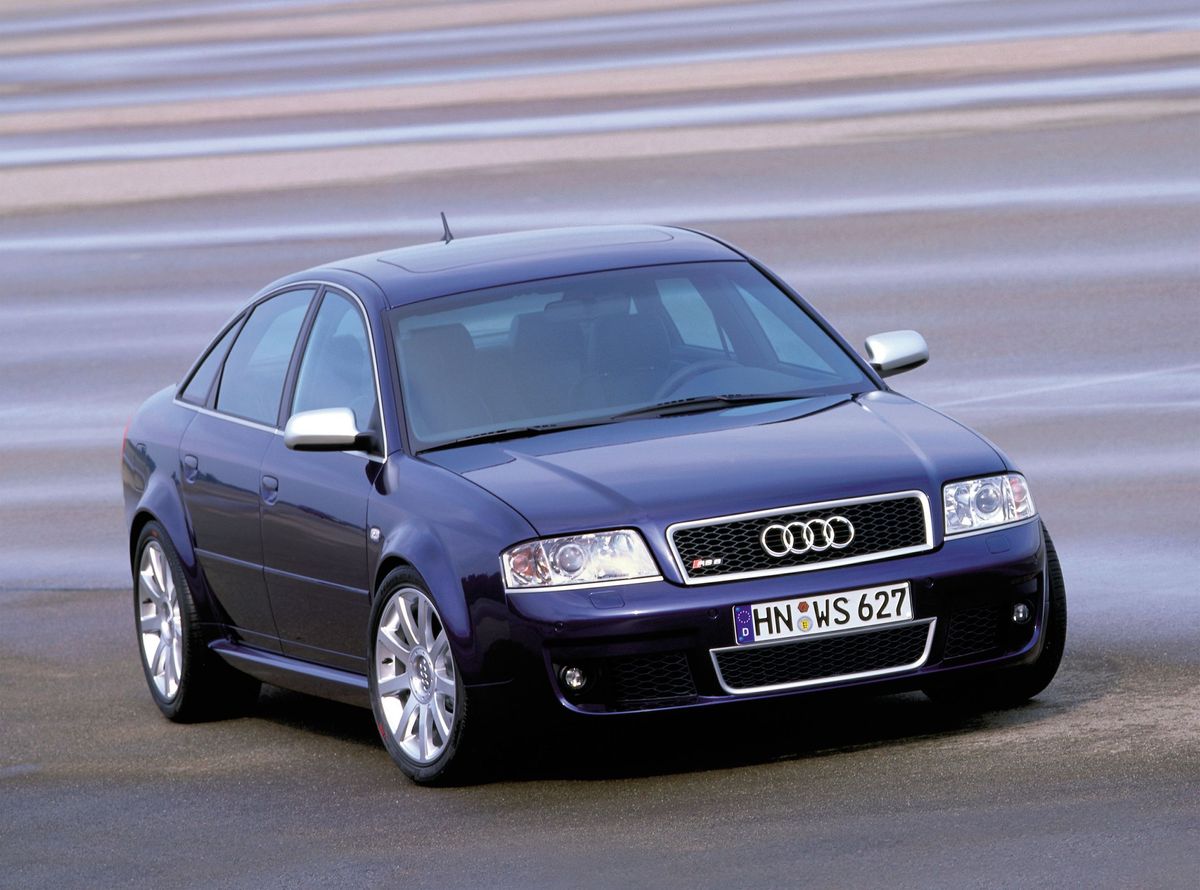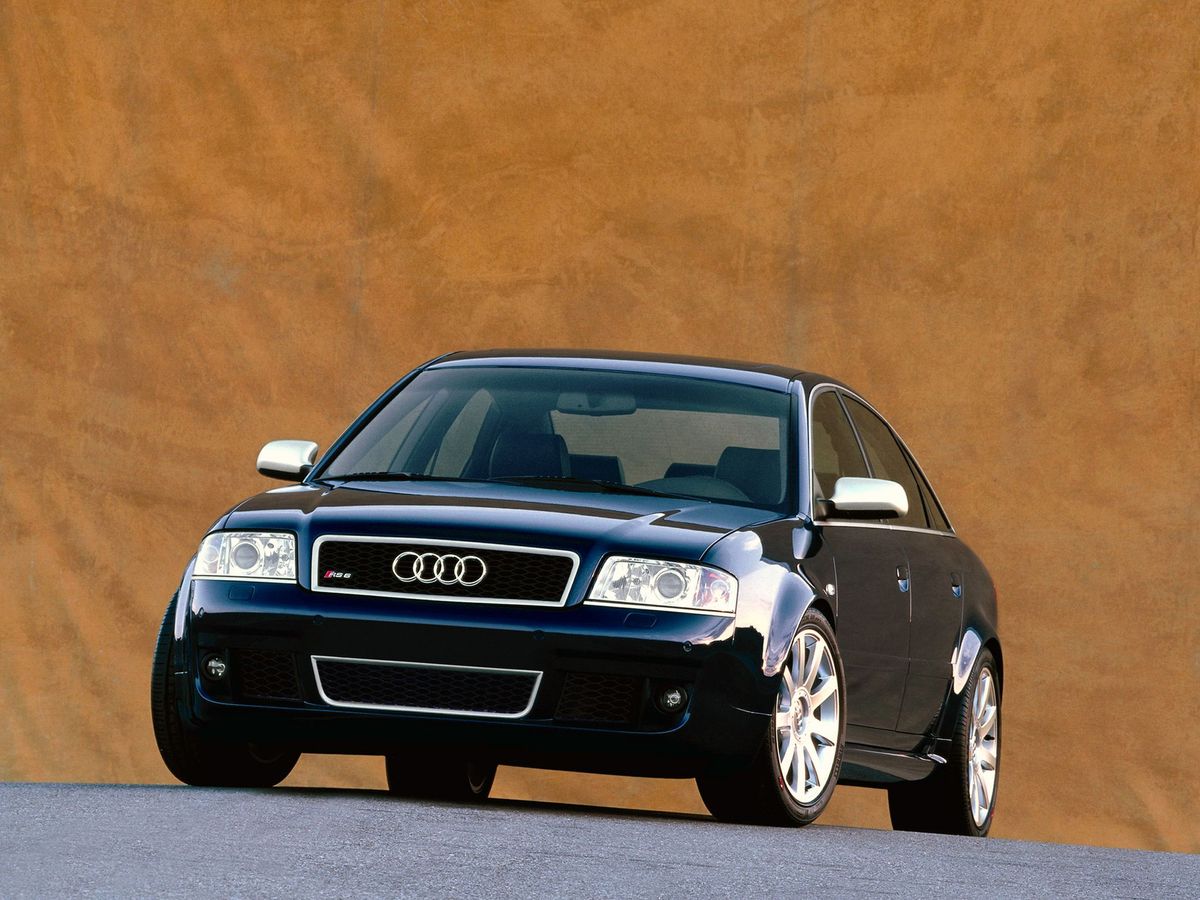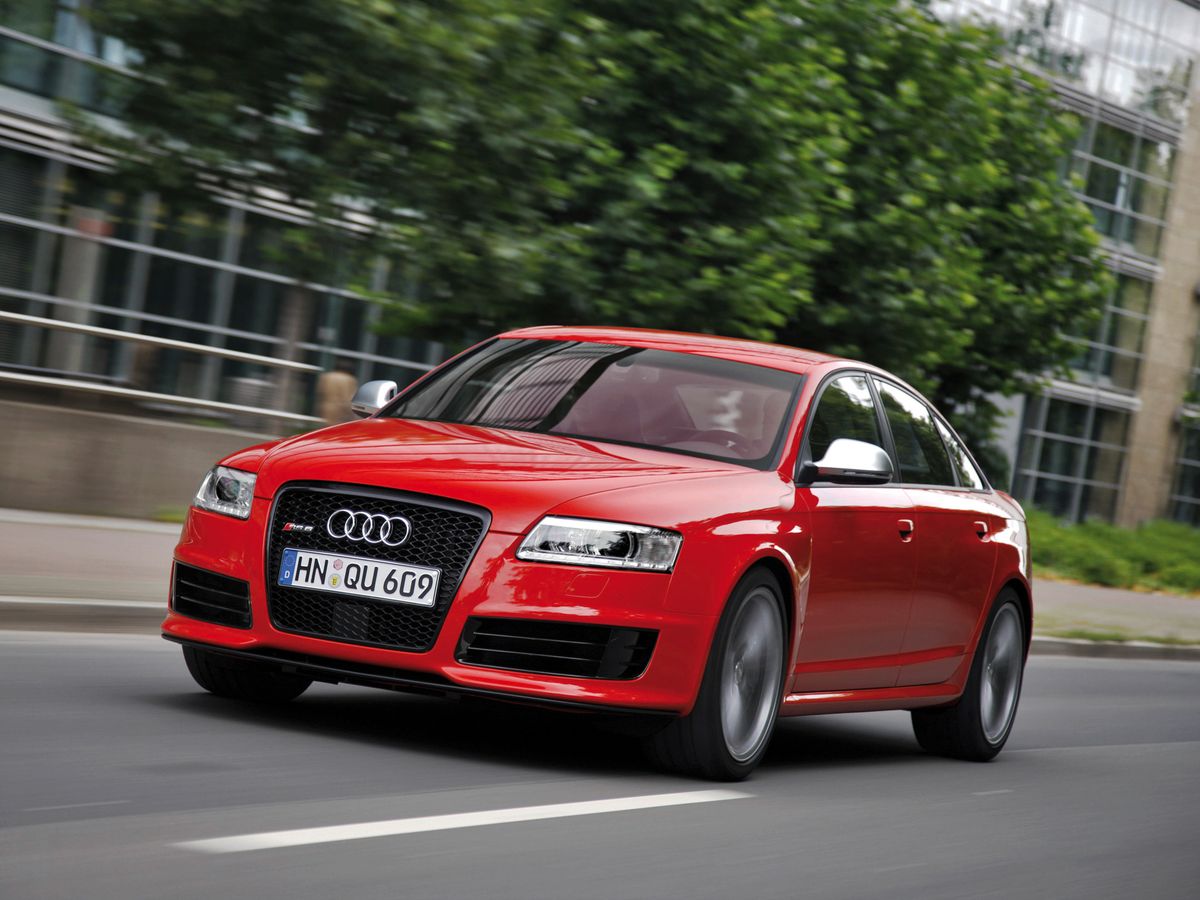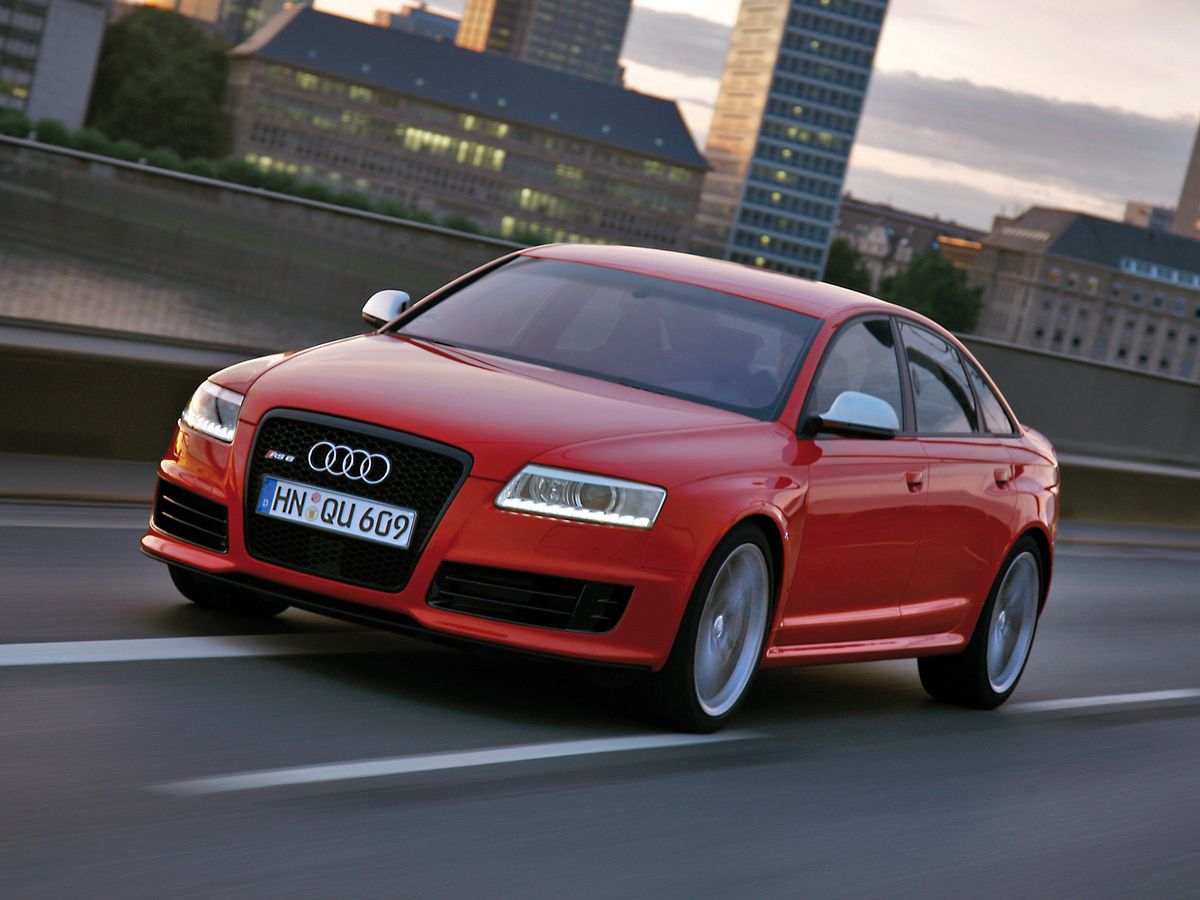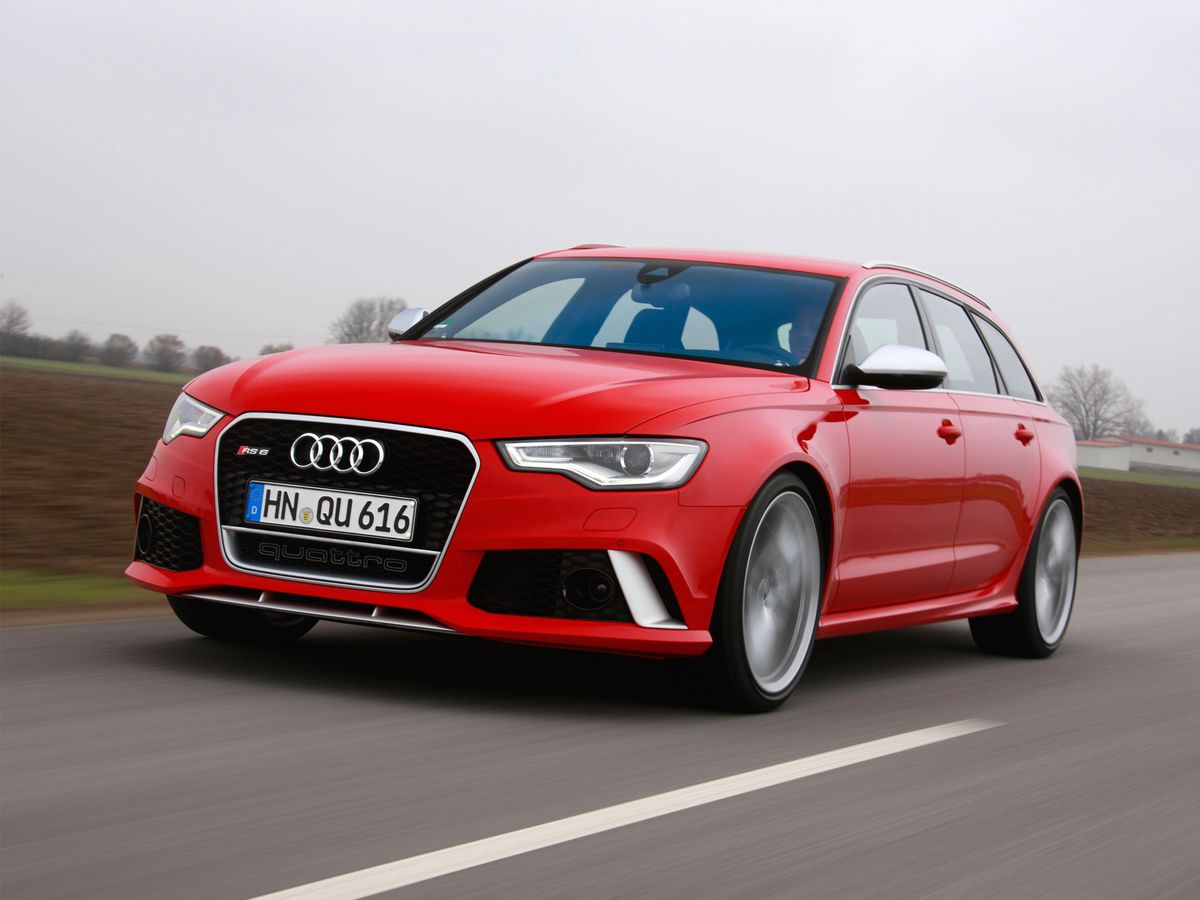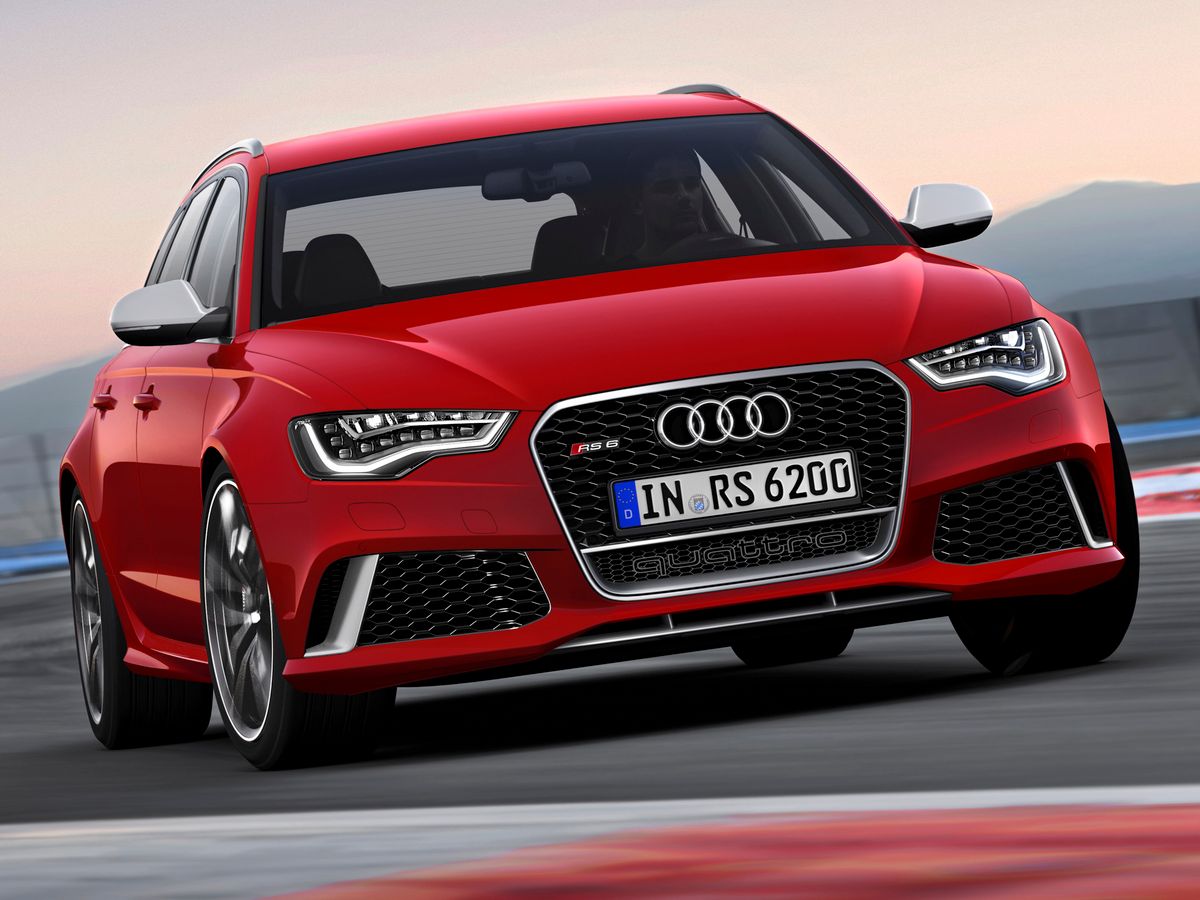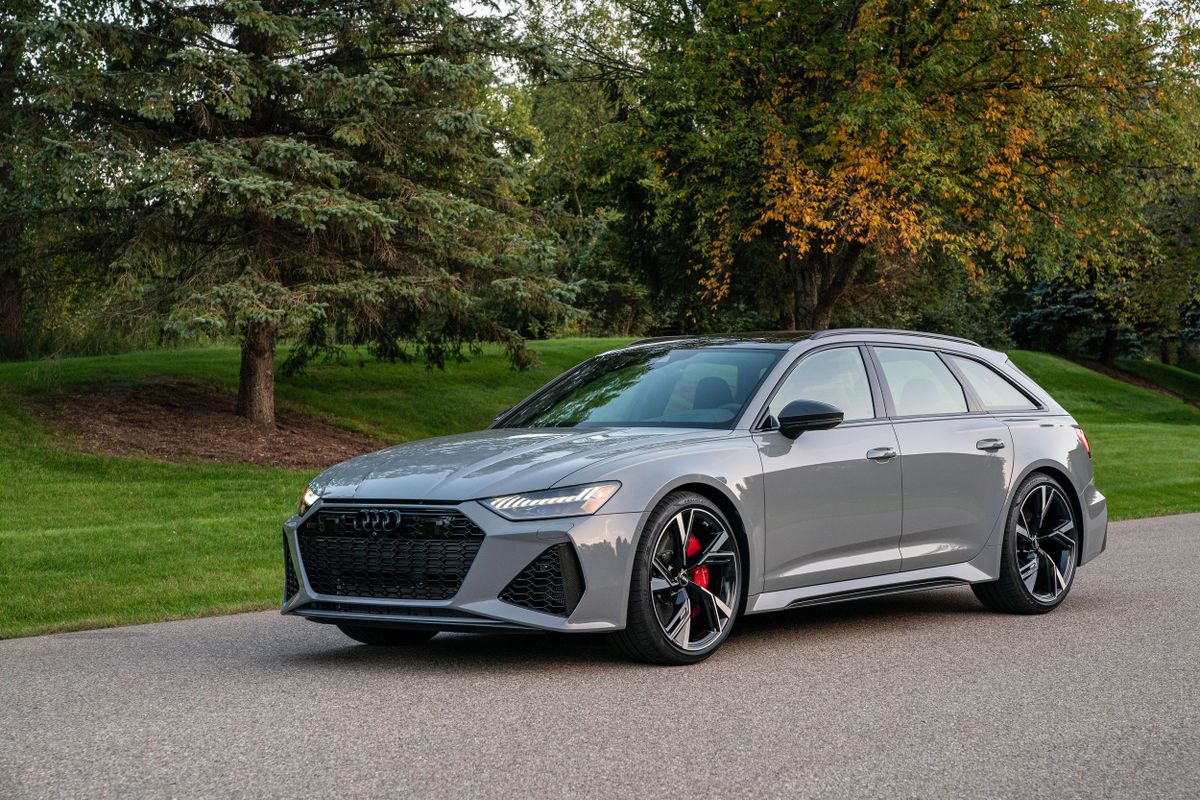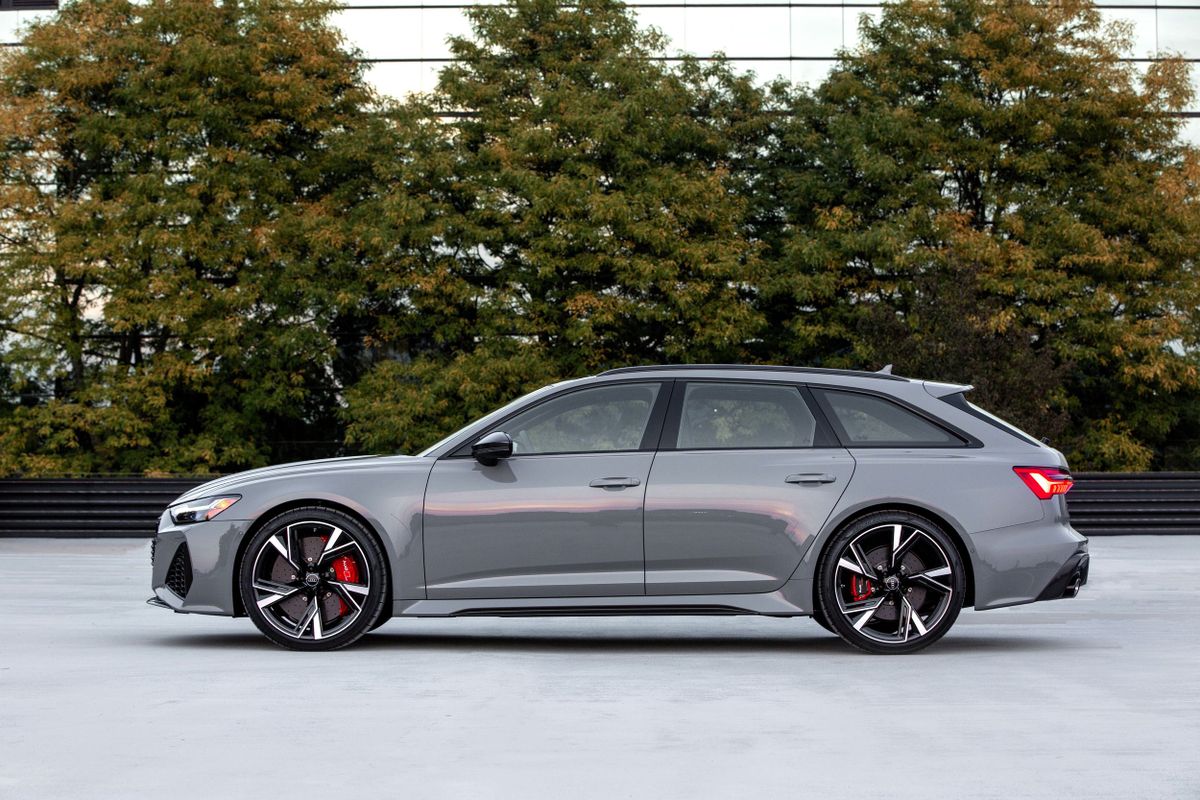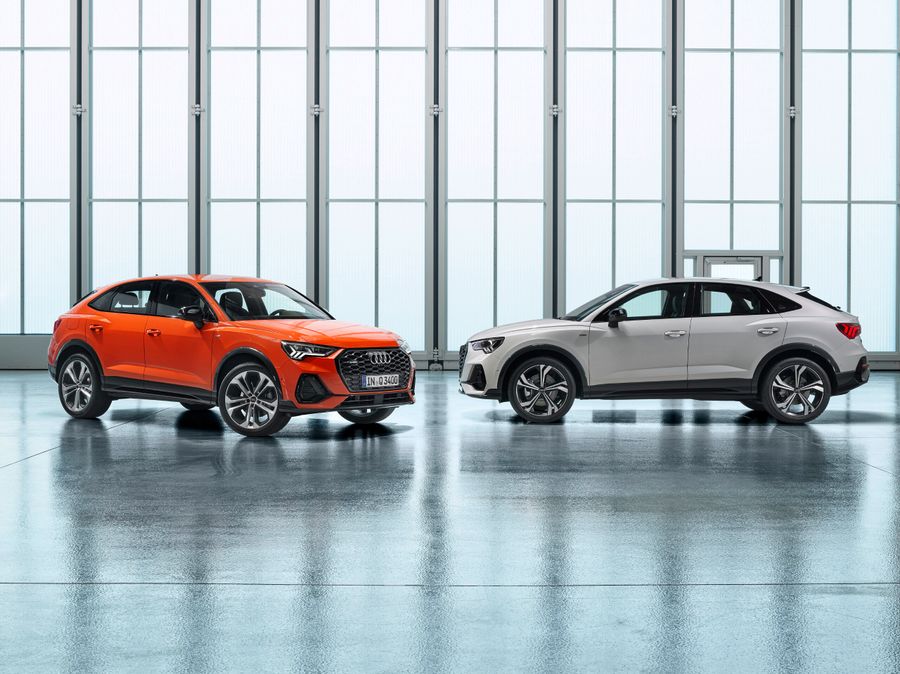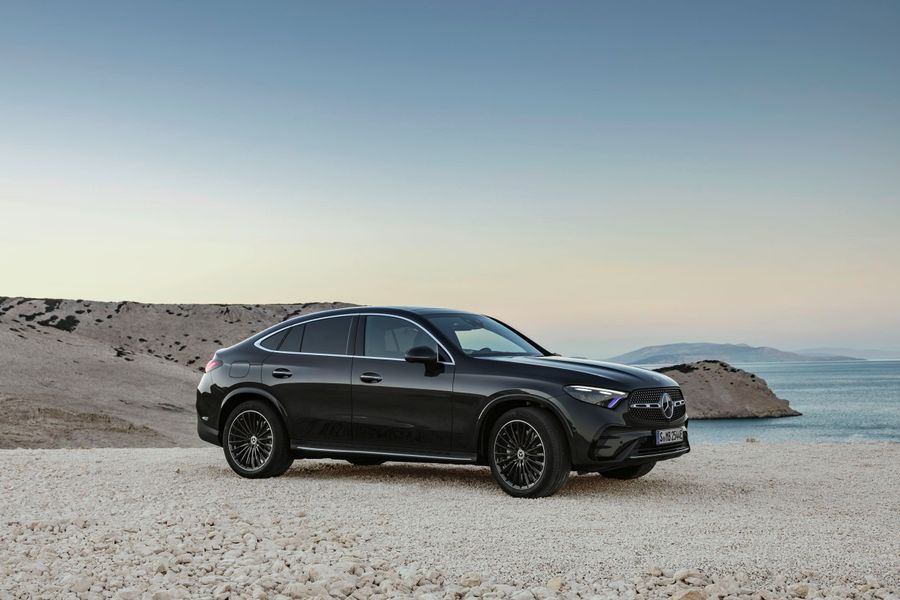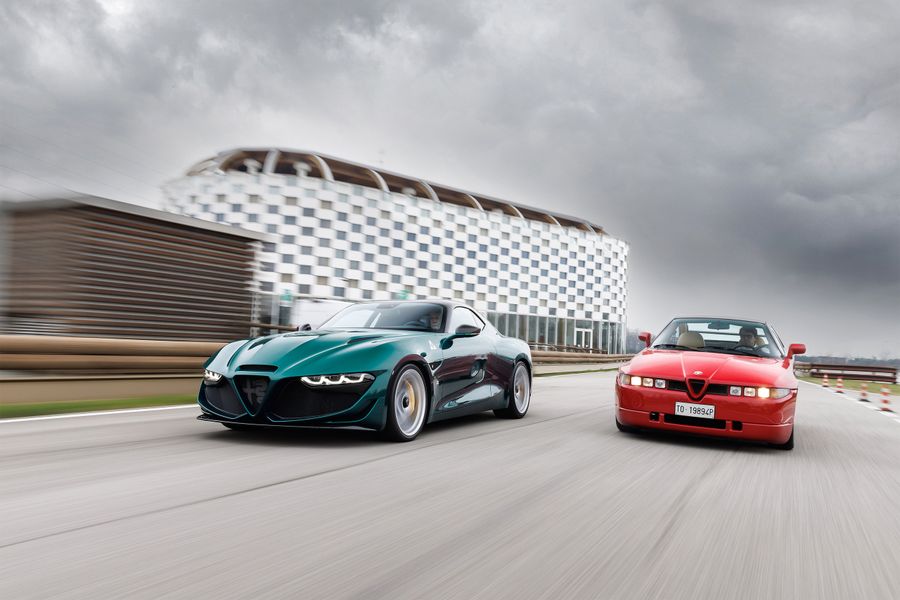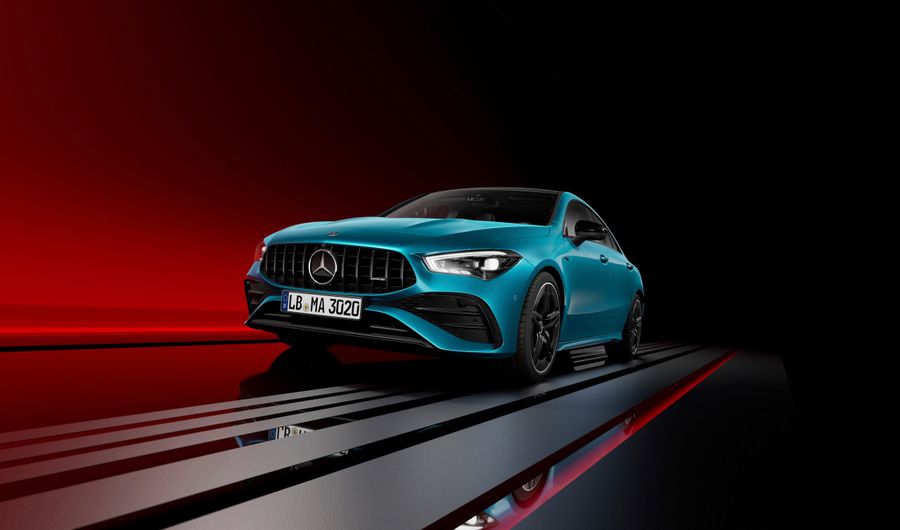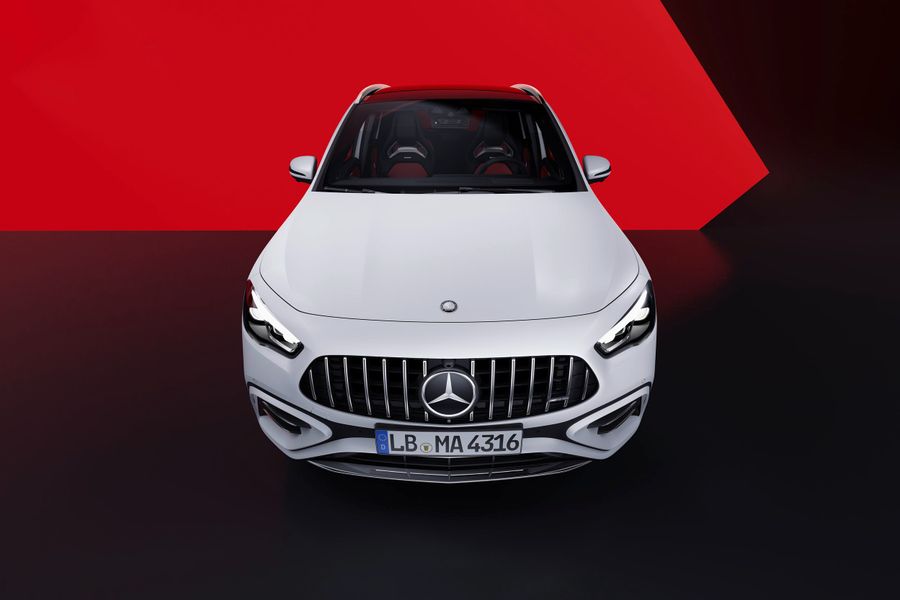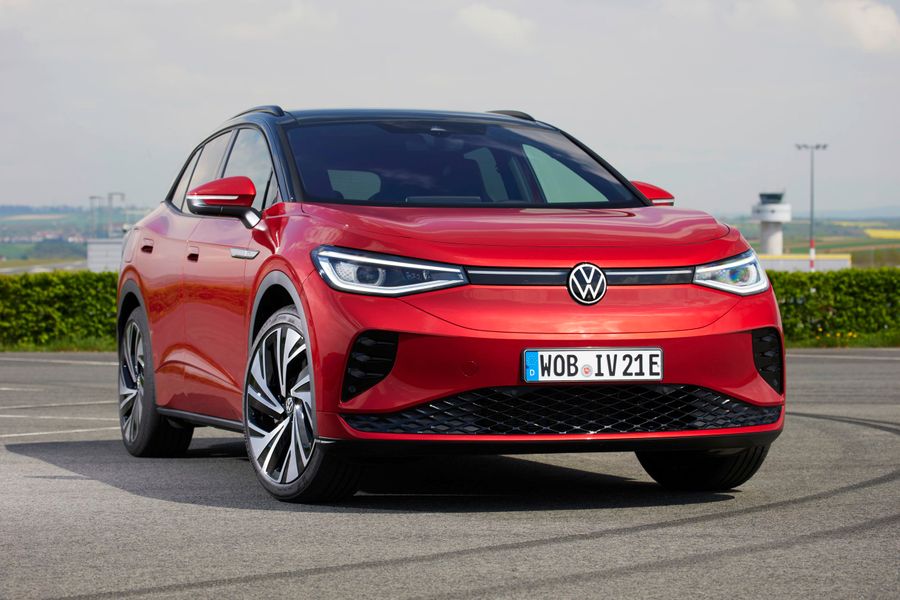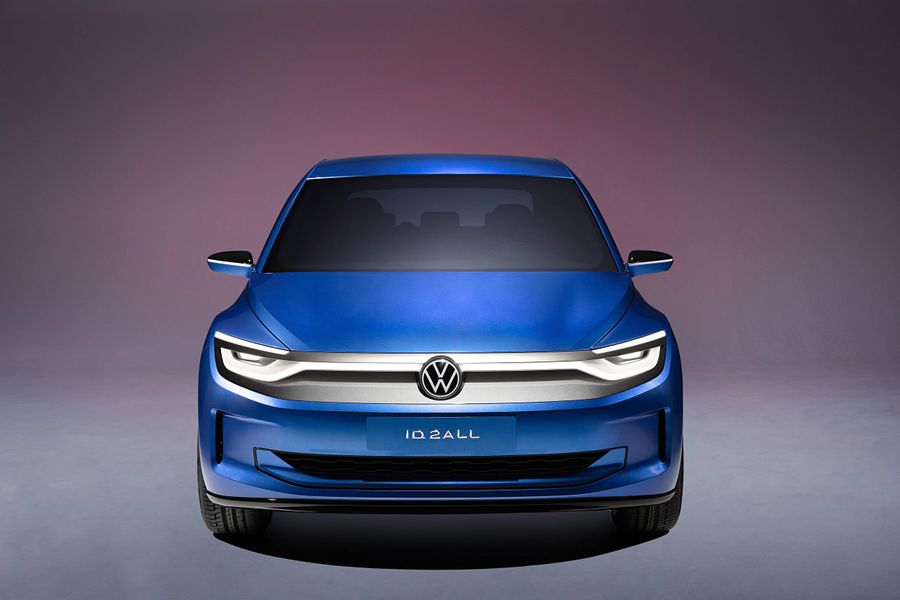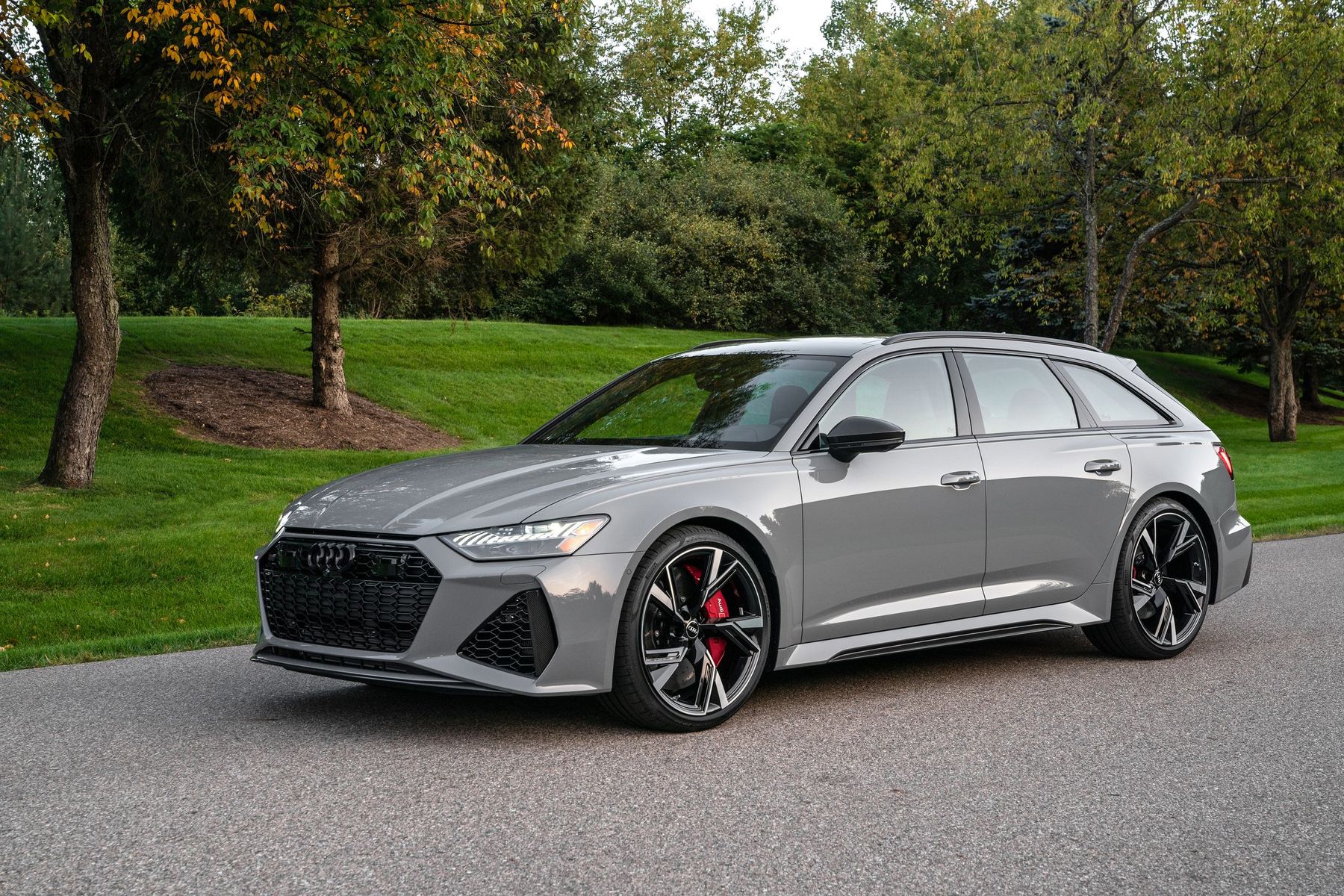
Audi RS6. RS means Real Sports
The Audi RS6 is a five-seater full-size luxury sports estate produced by Audi Sport GmbH (Germany) for Audi AG.
The ‘RS’ abbreviation comes from the German phrase ‘RennSport’ (‘racing sport’), meaning the top performance. Like all Audi RS models, the RS6 is the embodiment of Audi’s most advanced engineering and technology. The RS6 raced in the US SPEED World Challenge GT series from 2002 to 2004 and won championship titles for three consecutive years.
The first generation
It appeared in 2002 and was produced until 2006. The car, built on the Volkswagen Group C5 platform (1997-2004), debuted as a 5-door 5-seater Avant estate. Later, the manufacturer launched the 4-door sedan. The car belonged to the European E-segment. It was 4,852 mm long, 1,850 mm wide and about 1.4 m high. The trunk volume of the estate varied from 455 liters to 1,590 liters with the rear seats folded down. The sedan’s trunk held 424 liters.
The car featured an aluminum 4.2-liter V8 twin-turbocharged engine, developed and manufactured by quattro GmbH (Germany) and Cosworth Technology (UK, new name MAHLE Powertrain). The engine produced 450 hp and a maximum torque of 580 Nm in a wide range from 1,950 to 5,600 rpm.
Such impressive power allowed the car to accelerate from 0 to 100 km/h in 4.6 seconds. It took it 22.8 seconds to accelerate to 200 km/h (22.6 seconds for the sedan). The first RS6 was equipped with a 5-speed ZF tiptronic automatic transmission. The unit was electronically controlled and ‘knew how’ to adapt to the individual driving style. The car was produced only with Quattro permanent all-wheel drive, which used a Torsen T-2 dynamic center differential with automatic torque bias. The engine’s torque was first transferred from the transmission output shaft to the Torsen center differential, then was automatically divided and distributed between the front and rear axles.
The RS6 raced in the US SPEED World Challenge GT series from 2002 to 2004 and won championship titles for three consecutive years.
The front and rear axle differentials used an electronic differential lock (EDL). EDL is an integrated optional feature of the Bosch Electronic Stability Program (ESP) that monitors and compares the rotational speed of individual wheels on one axle, as well as brakes a slipping wheel by transferring traction to another engaged wheel. The ESP system was complemented by the ASR traction control system. Electronic brake force distribution (EBD) and Brake Assist (BA) were also standard equipment.
The RS6 used the same suspension as the A6 and S6: 4-link front and 2-link rear suspensions. But the car was 20 mm lower and featured stiffer springs. The RS6 was the first car to be equipped with the Dynamic Ride Control (DRC) system with sophisticated damping dampers. This provided comfortable straight road drive, stability and excellent grip during sharp turns, acceleration or braking.
The second generation
The second generation RS6, based on the Volkswagen Group C6 automotive platform, was unveiled in September 2007 at the Frankfurt Motor Show. The car was produced from April 2008, and the 4-door sedan appeared in August 2008 (it was produced until the third quarter of 2010). The Avant estate was more popular. In 2009, a total of 8,000 units were sold, and 6,500 of them were estates.
The RS6's 5.0-liter V10 engine was twin-turbocharged, direct-injection, and produced 579 hp and 650 Nm of torque. In January 2010, the RS6 was the most powerful Audi car in the brand’s history and outpaced its closest rivals, the BMW M5 and Mercedes-Benz E63 AMG. The 10-cylinder engine was cooled by seven radiators and four electric fans.
In January 2010, the RS6 was the most powerful Audi car in the brand’s history and outpaced its closest rivals, the BMW M5 and Mercedes-Benz E63 AMG.
The Avant estate accelerated to 100 km/h in 4.6 seconds, and it needed 12.7 seconds to accelerate to 200 km/h. The sedan accelerated from 0 to 100 km/h in 4.5 seconds. The front fenders and hood are made of aluminum for weight reduction. The LED daytime running lights were incorporated into the headlight housings so as not to interfere with the large frontal air intakes, which is why the fog lights were also removed. By the way, the headlights were adaptive and turned with the movement of the steering wheel.
The second generation RS6 had all-wheel drive and a new Torsen differential that distributed torque up to 100% to the rear axle or up to 80% to the front axle, depending on conditions. The car featured Audi’s “Dynamic Ride Control” (DRC) sports suspension. The shock absorbers were equipped with regulators and controlled by the Multi Media Interface (MMI) system.
The third generation
It debuted on December 5, 2012 and was released until 2018. The new RS6 Avant was 4,995 mm long, 1,951 mm wide and 1,460 mm high. The manufacturer stopped producing the sedan version. In its turn, the estate returned to the 4-liter twin-turbocharged 8-cylinder TFSI V8 engine, which produced 560 hp and 700 Nm of torque at 1,750-5,500 rpm. The estate accelerated to 100 km/h in 3.9 seconds. According to Audi, the average fuel consumption was 9.6 liters per 100 kilometers. To achieve this, start-stop and cylinder-on-demand systems were added (could turn off half of the cylinders to improve fuel economy). The RS 6 Avant in this generation was equipped with an 8-speed tiptronic gearbox.
The fourth generation
It has been produced from 2019 to the present (as of 2021). The new Audi RS6 is powered by a 4-liter twin-turbocharged TFSI petrol engine (600 hp and 800 Nm). To reduce fuel consumption and harmful emissions, the petrol unit is complemented by a mild hybrid system with a belt generator and a 48 V starter, which can develop up to 16 hp. The engine uses an on-demand cylinder system. Acceleration to 100 km/h occurs in 3.6 seconds, and it takes the estate 12 seconds to reach 200 km/h. The transmission is the rare classic 8-speed hydromechanical automatic transmission and quattro permanent all-wheel drive with a Torsen differential between the axles and a limited-slip differential on the rear axle.
The car is equipped with air suspension, featuring a ground clearance reduced by 20 mm in comparison with the conventional A6 Avant estate. When driving at speeds above 120 km/h, the ground clearance is reduced by another 10 mm, whereas for slow driving, the ground clearance can be increased by 20 additional millimeters.
Standard equipment includes Audi Pre-sense Front systems, adaptive cruise control, lane departure warning system, etc. Peripheral cameras monitor security within the 360 degrees. The car features a top-end Bang & Olufsen sound system and a panoramic roof, comprising two huge sunroofs with electric curtains. State-of-the-art matrix LED headlights are also standard on the 2020/2021 Audi RS6.


